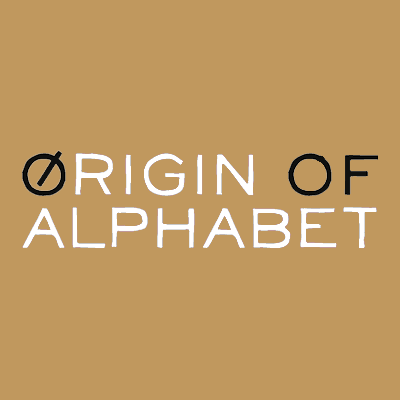Bubble Tea – Boba Nai Cha – and the biggest-breasted woman in China
Mandarin I Berkeley Extension – Class 4 – Sept. 27, 2011
425 Market Street
San Francisco, CA
Professor: Virginia Mau
Notes taken and commentary (marked by“Note:”) by Jennifer Ball (because of the typeface which I must use to render the Chinese characters correctly, extra spaces are occasionally seen before and after apostrophes and quotes).
Next class: Test on words in the book up to what we’ve studied. Homework: Page 3-4 in work book.
page = ye4 頁/页 (With the first incidence of a character, I will give the traditional/simplified version.)
第六页 = page 6
di4 liu4 ye4
Bathroom (euphemism):
小编
xiao3 bian4 = small convenience
or
小编池
xiao3bian4 chi2
池 = pond; reservoir
大编
da4 bian4 = big convenience (we’d better learn to say this well, because by the time we write 编, it might be too late…)
Culture:
Individual men put notices in the toilet stall about their new baby crying and everyone reads about the baby, so that makes the baby stop crying. Other issues are put up as well.
Pee:
1号
yi1 hao3 號/号 This character, besides meaning “pee,” also means “day, number, roar, cry.”
Poop:
2号
二号
er4 hao3
Other words for pee and poop:
Pee = 拉 lā pull, drag; seize, hold; lengthen
Poop = 撒 sā let go, to scatter
放屁 fang4 pi4 = fart, talk nonsense
fang4 = to release; to free; to let go; to put; to place; to let out
pi4 = to break wind; to fart
谁放屁
shei2 fang4 pi4 = who farted?
屁话
pì huà (pi4 hua4) = shit, nonsense (literally “fart words”)
Bathroom:
厕所
ce4 suo3 = toilet (hole in the the ground) Ms. Mau says, “don’t say this.”
Better to say this:
洗手间
xi3 shou3 jian1 (pronunciation: she show gee-en)
wash hands room
間/间 = between; among; space; (measure word)
According to Ms. Mau: They make woman pay for public toilets but not guys. Government-owned toilets. Even if you bring your own tissue, women still have to pay. I could not find any info on this.
Diarrhea:
拉肚子
la1 du4zi (literally “to pull stomach”)
du4 zi = stomach; belly; abdomen; tummy
腹泻
fu4 xie4“abdominal whoosh” (Ms. Mau)
瀉/泻
xie4 = to flow (out) swiftly; diarrhea
A reminder that a common Chinese construction is ABA, for example, “Good not good?” which means “Are things good or not?” (For more examples, see Mandarin Uncensored Class 3, pages 8-9.):
好不好?
hao3 bu4 hao3
“Today good?”:
今天好吗?(Note: I had this wrong before.)
jin1 tian1 hao3 ma3?
“Long time, no see”:
很久不见
hen3 jiu3 bu4 jian1
very long no see
“Forever good-bye”:
永別
yong3 bie2 = phrase from the movies or poem or sarcastic; literally: forever separate (Note that “separate” includes a knife character on the right:刂.)
“China, HongKong, prohibited to swear, nevertheless, low class or Mafia still do, but lately not even theMafia does.” (Ms. Mau)
卵屌
luan3 diao3 = penis, pronounced “lung diao” (Note: there is appears to be a sex association with words that rhyme with “diao,” such as “ 苗 miao2,” which is at the root of 媌 “mao3”: “pretty girl,”and “ 屪 liao2”: “penis.”
“Ticket/bank note” is “票 piao4.” When one considers that prostitution is the world’s oldest profession, this association with “ticket” or money makes sense. Piao1 螵 is a chrysalis, the product of sperm and egg. )
卵 = egg; ovum; roe; spawn; this is a depiction of Fallopian tubes with an egg in each.
孵 = hatch, sit on eggs
㚹 = pretty; charming girl (note that her Fallopian tubes are empty; this word is also mao3, like “pretty girl” above.)
![]()
Above is an Egyptian hieroglyph depicting Fallopian tubes which resembles the Chinese depictions of Fallopian tubes. As you see on the right, it means “vulva, cow.” We don’t much think of a cow having a vulva, but early cultures clearly did.
屌 = penis (even without the luan3; I guess luan3 clarifies that it’s a penis with functioning sperm)
完了
wan2 le = finished (sound of cop car) Recall that “ 晚 wan3 means “night” so there’s a slight association here between “night” and “finished,” even though the tones and characters are different. (Mandarin Uncensored Class 2, Page 9.)
了 = action is completed
le (no tone)
How are you these days/recently?:
最 近
zui4 jin4
most close. nearby
最 近 怎么样
zui4 jin4 zen3 me yang4
(Recall “zen3 me yang4” from Mandarin Uncensored Class 2, Page 3. “N” in “zen” not pronounced.)
森林
sen1 lin2
forest
If this seems redundant, it is. “Clarifying” is a big part of all languages. “Over-clarifying” might seem the more appropriate word. We do it as well: “lactate” is made up of “lac” (think “lake”: pool of fluid;“lacrimate,” “lacquer,” and “shellac” seem related; lick is very close, as is “liquor” and “liquid”; leche, “milk” in Spanish, and “lecher” both come from “to lick”) and “tate” which is a form of “teat” or “tit.”“Gala,” which is Greek for “milk,” is where we get the word “galaxy” (think “Milky Way.”) “Gala” and“laga” are both words for “vagina” in Sumerian. In the early days, things were less specific. Words signifying for women’s attributes also signified for women.
More over-clarifying: Friend Friend—The word “friend” depicted in two different ways:
朋友
Peng2 you3
in order to mean “friend”
又
you3 = and, also, again, in addition
男朋友
nan2 peng2 you3 = boyfriend
女朋友
nü3 peng2 you3 = girlfriend
也 = “also”
ye3 Beulah is a girl, Tomasina is also a girl. This sentence takes 也.
都 = “all, both”
dou1. Beulah and Tomasina are both girls. This sentence takes 都.
的
de (no tone) = of (possessive), target
我的 wo3de = mine
我们的 wo3mende = ours
你的 ni3de = yours
她的 ta1de = hers
谁的 shei2de = whose?
不是我的 bu4shi4 wo3de = not mine
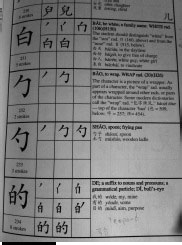 Not only does “de” mean possessive in Latin as well as Chinese, the 勺 character on the right is historically a spoon or a frying pan with something init, or a “wrap” around something of value. Anything that one possesses is of value, that’s why one possesses it. Possession was huge to early man, so this is a basic concept.
Not only does “de” mean possessive in Latin as well as Chinese, the 勺 character on the right is historically a spoon or a frying pan with something init, or a “wrap” around something of value. Anything that one possesses is of value, that’s why one possesses it. Possession was huge to early man, so this is a basic concept.
When “white” is added 白 to the left side of this character, it changes from“spoon” to ownership and “bull’s eye” (page 77,
Reading and writing Chinese: a guide to the Chinese writing system, the student’s 1,020 list, the official 2,000 list
by William McNaughton and Li Ying.Ruttland, VT: Charles E. Tuttle, 1999). Consider that an eye is a kind of target, and this “de” character is all about getting what you want—in your frying pan! And sometimes in your bed. The hard part of this theory is that sometimes it was both. People had to learn not to be cannibals, especially to spouses. Darwin says that in Terra del Fuego, the indigenous people claimed they ate their older women when they were starving before they ate their dogs because the women were less important than their dogs. (My husband says it’s only because the dogs could run faster.)
According to Jun Da (jda@mtsu.edu),
1 的 is the most frequent Chinese character, so even though it means “of,” it’s an important concept. Below is a sample sentence with the pinyin first, meaning second. I have highlighted “de” in order to show how often it occurs compared with all other words in a random
sentence:
wo3 – I/me
yao – want/will
bian4cheng2 – become
zhong1wen2 – Chinese language
lao3shi1 – teacher
ke3shi4 – but
wo3 de* – my
zhong1wen2 – Chinese language
bu2 – not
gou4 – enough
hao3 – good
suo3yi3 – so
wo3 de* – my
zhu3yi4 – idea
shi4 – is
chuang4zao4 – create
THE PINYIN PROJECT
bu4luo4ge2 – blog
hai2 – also
you3 – have
chuang4zao4 – create
YOUTUBE
ying3pian4 – video
wo3 – I
hui4 – will
pai1she4 – film
mei3li4 – beautiful
de* – grammar particle
dong1xi1 – things
lu4 xia4 – record
jiang3 – speak
mu3yu3 – native speaker
de* – grammar particle
ren2 – person
de* – grammar particle
sheng1yin1 – voice
If you put the radical found in “cat” 豸 in front of 勺, you get 豹 “leopard.” Now, a leopard aims for its target, it gets what it wants, and its coat has spots on it similar to the dot in the wrap. And leopard “bao1” rhymes with cat “mao1,” another predator. It’s easy to write these off as coincidences, but when there are thousands of coincidences in early language all in the vein of ownership, control, sex, and women, one asks are they coincidences or are human beings really simple? I’m going with humans are simple. We want what we want, and we emulate animals that are predatory. Recall in class when Ms. Mau said that “miao2 tiao2” means “attractive,” and someone male went “Mrrrrow.” Human males are fairly predictable in this regard. They resemble leopards and cats and anything that thinks it is king of the jungle.
The Mayans also cared about possessions, and Michael C. Coe devotes more than two pages on theMayans love of “name-tagging,” as he calls it, in Breaking the Maya Code, pages 245-246.
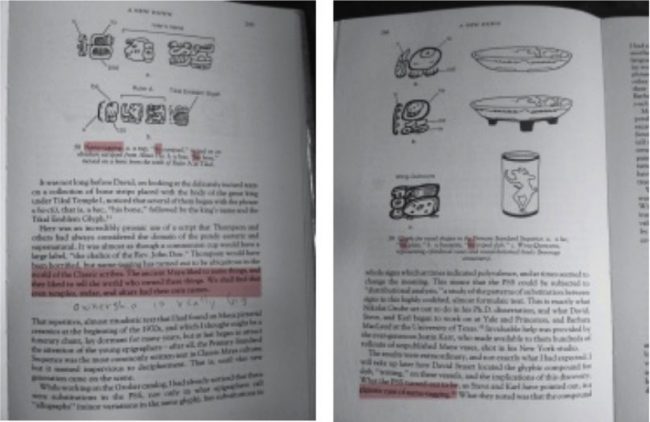
When I mentioned in class the universality of “de” to mean possession, that all Latin-based languages use of form of “de,” the teacher said, “No.” A classmate said derisively, “Well, if we knew Latin…”but of course, living in California, we all are exposed to Latin in the form of Spanish on a daily basis. Avenida de las Pulgas in San Mateo is Road of the Fleas. Even the fleas have possessions. There’s Cinco de Mayo, the fifth of May, Mexico’s Independence Day, which we associate with drinking margaritas.There’s San Francisco’s Mission de Assisi. There’s De Soto and De Haro streets, and Galería de la Raza in the heart de la Misión.
Ms. Mau equated my theory with a student who found a business man’s face in the Chinese character for “business man” (see next character below).
商人
shang1 ren = business man
I don’t see a face. I could make a better case for what business men typically sold 4,000 years ago. You see, this is not simply about whether a character looks like something, but comparing historical roots with what was important to early humans across all cultures that had writing. When one suggests that one has figured something out, people are threatened. When one suggests that humans are simple, humans are not happy. We used to kill people who threatened us, now we are just derisive and suggest that those threatening people are insane. It’s a preferable stance (not being killed for one’s beliefs), but I feel there is even a better way. Truth comes from a variety of sources. It’s important to question all authority, even if it’s written. The written word has been our God for sometime, but even gods need to be questioned.
If someone asks, “Has she eaten?” you can answer 她没有 “ta1 mei2 you3” (she hasn’t).
Geng3 wo3 du2***don’t know what this is yet
follow read aloud
我要你
wo3 yao3 ni3 = I want you
Notice that the bottom character of 要 is the character for woman, because women are at the base of man’s needs and desires. Above is an eye, which sees what it wants. Above that is the sky? Heaven?
What everyone theoretically wants. “Ticket,” piao4 票, gives one admittance to something they want.
不要谢谢
bu4 yao4 xie4xie = no thank you
不谢
bu4 xie4 = welcome
请
qing3 = please (the right-hand phonetic in this is also in the word for“semen,” 精 jing1, and it makes sense: the bottom is the moon stand-in for “flesh” and the top looks like an explosion—“flesh exploding” would describe “semen.” And no wonder it means “please.” The character on the left of semen is “rice.” Think about what rice pudding looks like and you’ll have a clue o this character.
It also means “essence” and “spirit.” “Poison” 毒 du2 also has that exploding top, and semen is a kind of neurotoxin. You introduce it into the vagina, and it starts a nine-month process that is very difficult to stop.)
錢/钱
qian2 = money (gold + I characters) Another example of the simplification process making the radical on the left less clear. The radical of the traditional character on the left of the slash looks like a mountain with gold or metal ore reflecting inside 金. The simplified “gold/metal” character retains a side of the mountain and no clear reflection 钅. It has two less lines and much less visual imagery. The simplified version is clearly a choice of something other than clarity.
吃
chi1 = eat
喝
he1 = drink (Both “eat” and “drink” have an orifice/mouth radical on the left. This sounds like “her”without the “r.”)
渴
ke3 = thirsty (On the “phonetic” right side, both “drink” and “thirsty” have the sun above, a “wrap” on the bottom with a person—ren 人 —inside. Could this depict a pregnant woman? Who is the thirstiest? A baby. You would use a depiction of the thirstiest individual in order, almost charades-like, to communicate the salient point most quickly. The water radical on the left helps convey the need for water as well. The use of the “wrap,” as seen on page 6, implies that this is a possession. A baby is one of the firstkinds of possessions.
你要吃吗?
ni3 yao3 chi1 ma?
You want to eat?
要不要?
yao3 bu4 yao3?
Want not want? ABA construction again.
Do you want?
Phoenetic spelling of coffee:
咖啡
ka1 fei1
吃喝 吃喝
chi1 he1 chi1 he1 = eat and drink. (There appears to be a love of repeated syllables. “Gōng gòng qì chē
公共汽车 is another example, which means “bus.”)
啤酒 = beerpi2 jiu3
酒
jiu3 is wine, etc. anything with alcohol
九
jiu3 same word as for 9, and look at that: “nine” and “wine” are very close in our language as well. Another amazing coincidence. Both of them share the legs of er2 儿 as well, which means “son/child.”Recall that alcohol was the first date rape drug. Rape often ends in pregnancy.
Other characters which share the same right-side “phonetic” component as “beer” 啤 include:
spleen, pancreas, disposition 脾 Pancreatitis is a result of alcoholism, and one’s disposition may be as well.
a small round piece of yeast 䴽 Yeast is required in fermentation; beer is made by fermentation.
oval 椑 Yeast and eggs are oval or roundish.
polished rice 粺 A grain is like an egg.
millet 稗 Ditto
weed 捭 The hand radical on left means you remove a weed.
a tick or mite 蜱 Mites are like small eggs or pieces of yeast. Insect radical on left.
a sheath 鞞 For a penis perhaps, that disperses something which creates eggs. Bull radical on left.
small trees; saplings
cuttings of trees for planting 㯅 Baby trees
add, increase, attach low fence 埤 Adding, like multiplying, produces more. New growth is more.
The relationship of all these characters with the one for “beer” is that beer is made from yeast, and yeast expands like a pregnant woman. Yeast multiplies. Beer is also made from malt, which is a grain that has started to sprout. To add or increase is to have more, like yeast rising or grain sprouting. In a pragmatic sense, this could mean a fence to encircle property. Your fence, your defence. Your barrier, your bar to intruders in order to keep them from taking your stuff. There’s that possession factor again. All cultures like to claim things. All early cultures wanted a way to have more. When they figured this out, they needed to account for it. That’s when writing started.
Color of wines:
red = 紅/红 hong2 (“Silk” is on the left, which was used in binding the feet, and “work” is on the right. Could this be a reference to the 1,300 years of bound feet, which were often bloody and broken, and hence they stained the silk red? Not sure.)
white = 白 bai2
Another quick association:
奶 nai3 is milk, which is white: bai2 白. Mothers give milk to babies whom they love: ai4
愛/爱. “Mrs.” is 太太 tai4tai, a woman who would have a lot of milk in a time before birth control. All of these words share “ai,” a sound that resembles identity, and is a homonym with “eye,”which, again, is a target like a breast. It is also the “window to our soul”: our “I.”
葡萄
pu2tao2 = grapes
Another example of over-clarification. Both of these characters mean “grapes,”but more commonly they are used together to mean “grapes.”
葡萄酒
pu2tao2 jiu3
grape wine
黃/黄
yellow = huang2
黄酒
huang2 jiu3 = cooking or Sangria (“leave fruit in it for a few months”)
yellow wine/alcohol
茅台酒
mao2 tai jiu3
“Thatch platform drink” doesn’t make a lot of sense, but when you look at the other meanings of “mao2,” which are only 11, the sense of a mai tai being an aphrodisiac seems clear: it’s a “tail” (euphemism for “sex”), a “spear; lance; pike,” and “Spanish fly”: the most famous aphrodisiac. An animal’s tail, or a tuft of hair, is like a notch on a belt, proof that one had conquest and won.
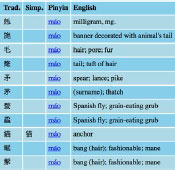
冰
bing1 = ice Bing1 almost sounds like the sound ice makes when it hits together.
On the right is the official water character 水 shui3; on the left is 2/3s of the water radical 氵, which is also seen on 酒 jiu3 “alcohol.” Perhaps it’s only a piece of the water radical in order to show that it is not moving but frozen? “Frost” is shuang1 霜. “Widow” is also shuang1 孀 because theoretically she should be frozen as well (in the eyes of men). In the Egyptian hieroglyphs, a widow is depicted by the Oxyrhynchus fish, which was famous for biting the penis of the god Osiris. To the ancient Egyptians, a widow was a woman without a penis.
二块冰
er4 kuai4 bing1
2 cubes ice
Google translate says:
两个冰块
Liǎng gè bīng kuài
two ge-marker ice block
鸡尾酒
ji1 wei3 jiu
cock tail
雞/鸡 = fowl/rooster/cock
ji1
尾 = tail (Note that the left character is “corpse” or “bottom”; the right is “hair” or “tail.”)
水 = water
shui3
冰 水 = ice water
bing1 shui3
气 水 = soda (gas water)
qi4 shui3
氣/气 = gas; air; smell; weather; vital breath; to make sb. angry; to get angry; to be enraged
qi4
冰红茶
bing1 hong2 cha2
iced tea (black tea is considered red tea in China, says Ms. Mau)
茶 cha2 has “sprouts” on the top to clue one into the fact that this is a plant; it has modified “small”on the bottom, to clue one as to the size of the plant. Possibly because tea leaves were often used as away to foretell the future, “investigate, examine” is also pronounced cha2 査.
緑/绿 = green
lü4
绿茶 = green tea
lü4 cha2
Ms. Mau says there is no cold green tea.
果 = fruit, result (tree with something on it that a human would target, like fruit)
guo3
蘋/苹 = appleping3
汁 = juice, liquor, fluid, sap, gravy, sauce (note the water radical on the left side of the zhi1 character)
zhi1
苹果汁 = apple juice
ping3guo3 zhi1
牛乃 or 奶 = milk
niu2 nai3 – nai3
人乃 = human milk
ren nai3
Yes, that nai3 乃 character is a depiction of female breasts even though it means “to be; thus; so; therefore; then; only; thereupon,” and it looks like our “B.” “To be” is to suckle. Long ago, you didn’t live if you didn’t have breast milk in the beginning of life. We say our “B” comes from “house” because Western culture is in denial concerning how much we like breasts. “House” is where man imprisoned the breasts (and vaginas) for at least 5,000 documented years. For more info, see “Breasts, Vaginas, and Tools, the roots of our Alphabet,” www.originofalphabet.com.
荳/豆 = bean, peas
dou4
浆 = broth; serum; to starch
jiang1
豆浆soy milk (really “bean broth”)
dou4 jiang1
清 = clear; distinct; complete; pure
qing1
Here is that “jism” character again, and this time it is with the water radical. In many cultures, once a male ejaculates, there is the belief that he is now pure.
清酒 = sake (clear wine)
qing1 jiu3
我要冰啤酒
wo3 yao4 bing1 pi2 jiu3
I want cold beer
奶茶 = milk coffee, only in Hong Kong (even though word is tea)
nai3 cha2
bo1 boa4 nai3 cha2
“Classic boba nai cha with extra boba”
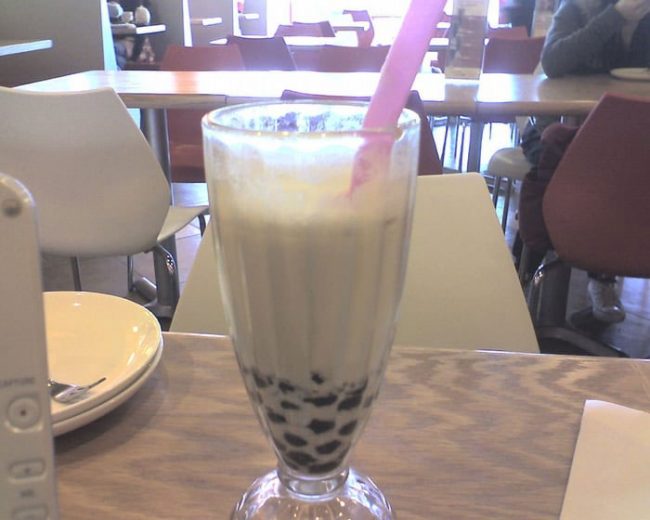 Bo1ba4
Bo1ba4
Urban dictionary says: “In Taiwan, BOBA is a slang term used for “big breast” or “big-breasted female”. Only in the U.S., didthe word take on the new meaning of tapioca ball, probably due to its spherical resemblence. Back inTaiwan, the origin of boba, they use the word zen zu, which literally means “pearl,” to refer to the tasty tapioca ball. Regardless, both bobas are good.”
On the Cantonese Sheik forum (http://www.cantonese.sheik.co.uk/phorum/read.php?3,50139,50396): Living in Los Angeles, we have variety of names that it is referred to. The most common isboba 波霸奶茶 we also use 珍珠奶茶. InEnglish, we refer to it as “boba milk tea” or just “boba” most commonly, but it’s also referred to as “tapioca milk tea” and some Americans have been calling it but this ugly name. bubble tea.”
波 = waves, breakers; undulations
bo1
霸 = rule by might rather than right
ba4
(One commenter called “boba” a “dominatrix,” so one can see that argument with the above character. Could this be “ruling by large breast size”?)
珍
= precious, valuable, rare
bo1
珠
zhu1precious stone, gem, jewel, pearl
Amy Yip or “Yip Zi Mei is name of porn star w/bobas,” say Ms. Mau. Wikipedia says she “was one of the leading sex symbols of Hong Kong cinema in the late 1980s and early 1990s.”
葉子楣
Yè Zǐmèi
葉/叶 = leaf; page
Note: 汁 vs. 叶 juice/sap vs. leaf/page: all are products of a tree. 什 = a file of ten solidiers, so 汁 is the product of ten fruits, and 叶 is the product of ten leaves.
楣 = crossbeam above or under gate, lintel
I think this character can be used as a euphemism for “LottaBalcony.”Lotta Balcony was a woman’s name that the comedy group Riot Act would call an unsuspecting female in their audience who sported a large set of bobas, circa mid-1980s. Balcony, crossbeam, lintel, boobs: they often jut out and require cabling.Ms. Lin has the final word here on Bobas:
While it’s true the word “bo ba” came from the time when she [YeZi Mei ] was an iconic figure for women with big breasts in HongKong cinema, bo ba is a Cantonese word. “Bo” is a euphemism for breasts. Because people are embarrassed to say the word “breast” in public, so they use the word “bo,” which sounds the same as “ball.” If you think of volleyball and women with breasts the size of two volleyballs in front. That’s big!
霸 bà feudal chief; rule by force; tyrant; lord; master; hegemon; usurp is a word to describe power. In this case, it means Ye ZiMei has the biggest breasts. It’s almost like saying she’s the queen of big breasts.
For more about color in Chinese, go to
http://hua.umf.maine.edu/Chinese/stories/xinxin/saving/colorc.html
Chinese characters and definitions from:
http://www.mandarintools.com/
http://www.google.translate
http://www.cantonese.sheik.co.uk/dictionary/words/8586/
